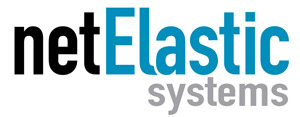The topic of network agility has been gaining momentum in the past few years. However, the COVID-19 pandemic and the resulting work-from-home surge has put the importance of network agility into overdrive.
Network Agility: A Definition
The term “network agility” means different things to different people. In looking for a common denominator, network agility can be defined as the network’s ability to respond to network changes in real-time while maintaining resiliency and management simplicity. An agile network can adapt to changes – like increases in network traffic due to the coronavirus – as they happen while remaining flexible and easy to manage.
Creating an Agile Network
A key characteristic of an agile network is scalability. A scalable network can handle current demand and can also expand to meet future demand without having to redesign the network. In summary, scalability is the ability to scale or expand your network to accommodate future growth.
In contrast, limited scalability means there are limitations on network growth before a service provider has to engage in significant network redesigns and additional investments. With traditional hardware-based networks, the purchasing and provisioning of hardware network devices (such as routers) at each location is time-consuming and expensive. It can take weeks before all locations are updated. As a result, rapid scalability is nearly impossible with physical network devices.
Broadband Network Gateways and Scalability

As part of traditional hardware-based networks, hardware-based broadband network gateways (BNGs) also lack scalability. In today’s environment of rapidly changing network traffic, long hardware implementation cycles (that consume costly on premise IT resources) aren’t feasible. Subscribers also expect on-demand access to new services, which is problematic when you have to reconfigure existing physical network appliances, or purchase new appliances to support new services.
Legacy BNGs are also “closed systems” that bundle software with proprietary hardware. This result is high costs and minimal flexibility. Virtual broadband network gateways (vBNGs) eliminate this problem by decoupling BNG software from the hardware. Instead of legacy BNGs with expensive proprietary hardware, Virtual BNGs run on white-box, x86 servers.
A Next-Generation Virtual BNG
netElastic was one of the first companies to develop a Virtual BNG. It has become an industry leader by using software-defined networking (SDN) technology to deliver market-leading scalability and flexibility with an optimized data plane and highly scalable design. netElastic vBNG supports very small subscriber bases up to millions of subscribers. It also enables service providers to deliver new services faster, whether they’re deploying a new rural network or upgrading a large-scale metro POP.
vBNG separates the data plane and control plane so each can be scaled independently, which provides the ability to dynamically adjust the network based on constantly changing demands. Both the control plane and data plane can scale up and down to meet performance needs, and they can run in different hosts to take advantage of CPU cores to maximize scalability and performance.
Don’t Forget the Cost Savings

netElastic vBNG is designed to help service providers move away from proprietary network equipment by disaggregating network software from hardware, which significantly lowers costs and increases network agility.
Using vBNG software on white-box servers also benefits from the rapid price reductions seen in commercial x86 hardware. Commercial-off-the-shelf (COTS) hardware prices typically drop 50% every 2 to 3 years, yielding even more savings during hardware refresh cycles. netElastic’s software-based approach and industry-leading scalability can help carriers save up to 70% in costs compared to hardware-based solutions.
Nigel Rayneau, the CEO of leading VoIP provider Ufone, stated “The big router manufacturers required close to 1,000% more investment dollars for a single BNG (compared to netElastic), since we were expected to purchase a larger number of licenses up-front than we actually needed. The cost savings by using the netElastic vBNG on the provider edge allowed us to invest more in our core and backbone infrastructure, not only allowing us to provide all the benefits and features that our larger competitors provide, but also to strengthen our overall network for less cost.”
To learn how netElastic vBNG can help you increase network agility and lower costs, please download the white paper on: “Next Generation Virtual BNGs: Preparing for the Exabyte Onslaught.”

